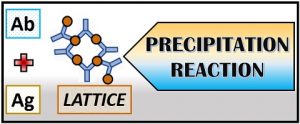

For the reaction to occur, the concentration of both antigen and antibody must be equal, which in turn produce a visible mass of precipitate or lattice. Each technique has its own advantages and disadvantages, so it is important to choose the right one for each individual application.If anyone’s concentration (either antigen or antibody) exceeds, the immunocomplex will not form. Coprecipitation is a more gentle technique that can be used to purify proteins from a complex mixture, while post precipitation is a harsher technique that can be used to isolate proteins from contaminants. There are many differences between the two on the basis of many factors such as time in completion, mechanism, and reactions. In conclusion, post precipitation and coprecipitation are two different techniques that are used to purify proteins. It is important to understand the difference between these two processes before using them in any chemical process. However, both processes have their own advantages and disadvantages. Coprecipitation is a more efficient process as compared to post precipitation. Thus, we can see that post precipitation and coprecipitation differ on the basis of various factors. This is because the precipitate formed during post precipitation is more likely to be soluble In contrast, post precipitation results in a less stable product. This is because the precipitate formed during coprecipitation is more likely to be insoluble.

In coprecipitation, the two substances interact to form a precipitate. The difference between post precipitation and coprecipitation is that the former involves a solid-solid interaction, while the latter does not.The morphology of the precipitate formed by coprecipitation is more complex as compared to the precipitate formed by post precipitation.In coprecipitation, the precipitate is formed in the solution phase itself whereas, in post precipitation, the precipitate is formed in the gas phase.The driving force behind coprecipitation is hydrophobic interactions whereas in post precipitation it is electrostatic interactions.


Coprecipitation is a reversible process but post precipitation is not.In coprecipitation, two or more ions get together and form an insoluble compound whereas in post precipitation only one ion is involved.The rate of coprecipitation is always greater than the rate of post precipitation.Post precipitation and coprecipitation differ on the basis of a few factors which are listed below: What is the difference between post precipitation and coprecipitation? Here are the factors on which post precipitation and coprecipitation can be differentiated: This can be due to a variety of reasons, such as the particles being too large to precipitate out with the main event, or because they have a different charge than the particles that precipitate out first.įactors on post precipitation and coprecipitation Post precipitation is the process by which one or more particles are precipitated out of solution after the main precipitation event. This can happen when the particles have a similar charge, when they are attracted to each other, or when they are both trying to avoid being in contact with the solvent. In this blog post, we will discuss the difference between these two precipitation processes in further detail!Ĭoprecipitation is the process by which two or more particles are precipitated out of solution together. Coprecipitation involves a chemical reaction that takes place in solution, while post precipitation refers to a solid-liquid separation process that occurs after the reaction has already taken place. One of the most notable differences is where the precipitation process occurs. There are several differences between post precipitation and coprecipitation.


 0 kommentar(er)
0 kommentar(er)
